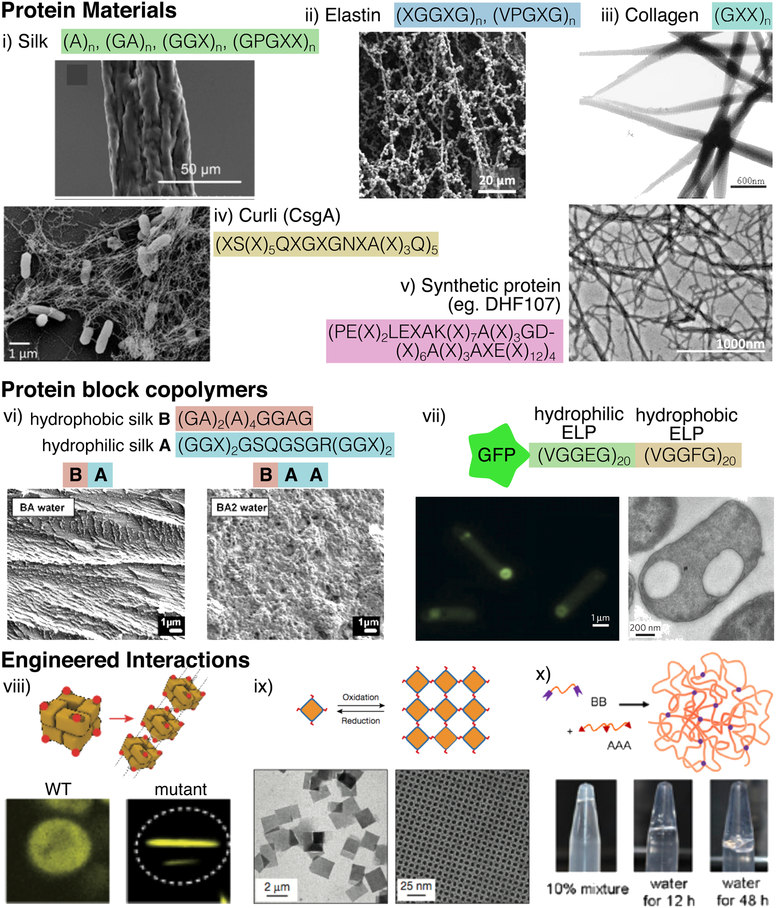Figure 1.
Examples of commonly used and recombinantly produced protein materials: (i) silk (adapted with permission from 28, copyright 2016 Nature Publishing Group), (ii) elastin-like proteins (ELPs) (adapted with permission from 40, copyright 2018 American Chemical Society), (iii) collagen (adapted with permission from 142, copyright 2001 Wiley Online Library), (iv) curli (adapted with permission from 52, copyright 2017 American Chemical Society), (v) de novo designed protein DHF107 (adapted with permission from 60, copyright 2018 American Association for the Advancement of Science). In each case, the critical amino acid motifs are shown, with X representing variable positions, as well as electron micrographs showing high magnification images of materials assembled from the expressed proteins. Sequences encoding protein materials can be concatenated into block copolymers, to imbue the resulting proteins with complex selfassembly properties. For example, (vi) Rabotyagova et al.67 combined silk-inspired modules to produce morphogenically distinct nanoparticles (adapted with permission from 67, copyright 2009 American Chemical Society). (vii) Huber et al.68 created amphiphilic ELPs that formed capsules inside bacterial cells. Interactions between proteins can also be exploited to generate protein macromolecular assemblies (adapted with permission from 68, copyright 2015 Nature Publishing Group). Such interactions can be used to engineer (viii) micrometer scale fibres (adapted with permission from 72, copyright 2017 Nature Publishing Group), (ix) 2D crystalline arrays (adapted with permission from 73, copyright 2016 Nature Publishing Group), (x) covalently crosslinked hydrogels (adapted with permission from 75, copyright 2014 National Academy of Sciences).

